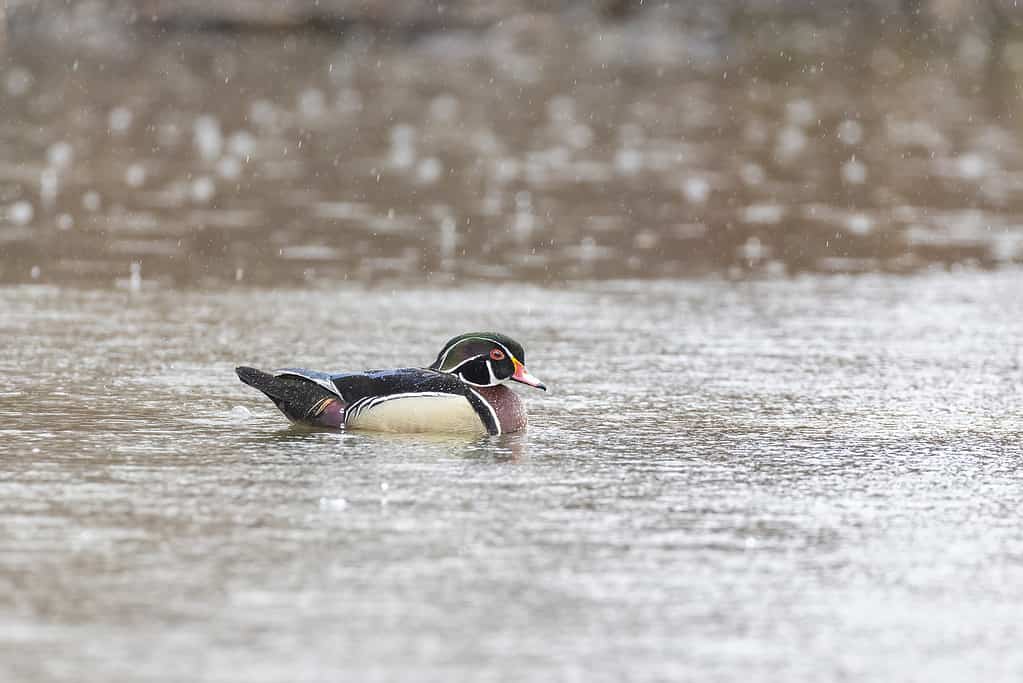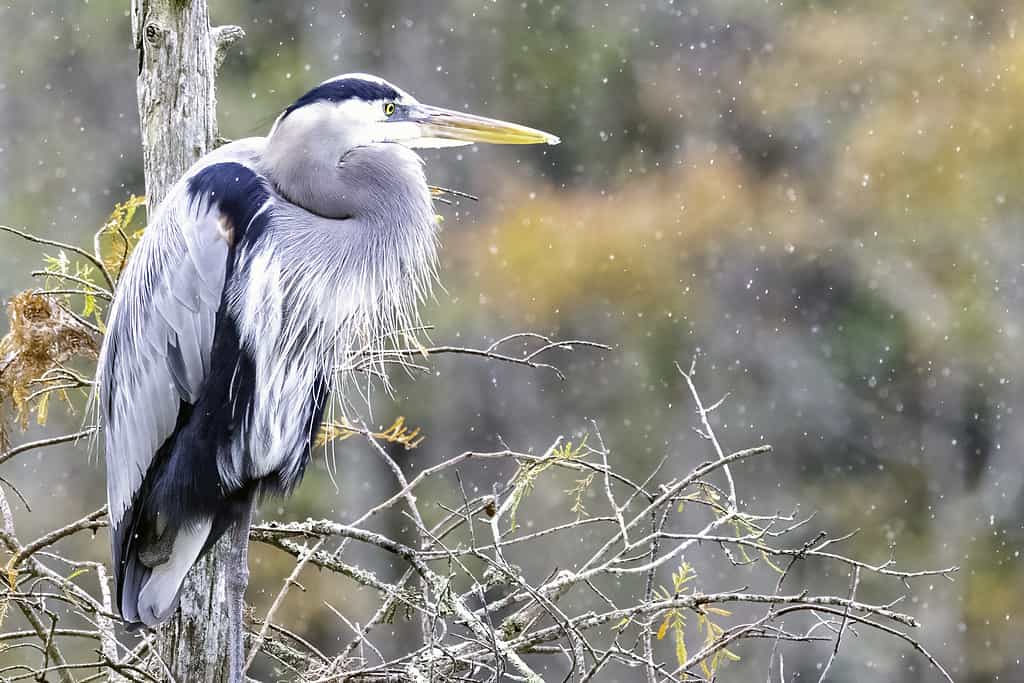Birds out in the rain are often the very picture of sadness. This rings especially true in cold weather. Many other animals have warm burrows where they can hide until the rain stops falling. But what about our fine-feathered friends? Where do birds go when it rains?

Many songbirds, like this
Blue Jay
, seek shelter from the rain in trees and shrubs.
©krblokhin/iStock via Getty Images
Birds Know When Rain Is Coming
Birds have a bit of an advantage over humans, in that they easily recognize changes in barometric pressure. Some humans have a good sense of pressure changes, too, but not nearly as refined as that of birds. They can sense, usually well ahead of time, that rainy or stormy weather is coming. When the pressure drops, they feel it, and they know it is time to get busy.
If you notice an unusual amount of activity around your bird feeder, that may be a signal that storms are coming, as the birds work to stock up on food. Before the rain arrives, you might notice the birds stop singing and seem to disappear. They have likely sought shelter wherever they could find it in preparation for the winds and rain.
Urban Birds Hide When It Rains
Some bird species are highly adapted to life in urban areas. These birds have fewer natural places to hide, such as trees and shrubs, but they have an abundance of human-made structures that provide cover. Birds like pigeons, grackles, and starlings adeptly find shelter under eaves and overhangs on buildings, under awnings, in tunnels, parking garages and bridges, on signs, and even under things like park benches and parked cars.

Urban birds like these pigeons may seek shelter under bridges and overpasses.
©An Emsley/iStock via Getty Images
Some Birds Have Adaptations for the Rain
A number of bird species have special adaptations that help them deal with the rain. Most birds have feathers that are at least somewhat resistant to rain. They can hold their feathers down tightly to further repel the rain, and then fluff them up to dry out more quickly when the rain stops.
Waterfowl such as ducks, geese, and similar birds have oil glands near their tails. These glands produce large amounts of oil that the birds can spread over their feathers with their bills. The oil helps to waterproof the feathers so that rain beads up and runs off. Underneath these oily feathers, the down feathers stay relatively dry. This helps the birds stay warm even in cold, wet weather.

Waterfowl, such as this Wood Duck, use their oil glands to protect their feathers from the rain.
©mirceax/iStock via Getty Images
Some other birds, including herons, pigeons, doves, some parrots, and the endangered blue Kagu of New Caledonia all have special feathers known as powder down. These long, spindly feathers are different from ordinary down. They never stop growing, and they break down making a powdery coating on the under-feathers. This coating causes water to run off and helps keep the birds dry.

Great Blue Herons have special feathers known as powder down that repel rain.
©dangarneau/iStock via Getty Images
Where Birds Go Depends on the Season
Where birds go when it rains depends a lot on what time of year it happens to be. In warmer months, from spring through early fall, birds don’t seem to mind the rain so much. Many songbirds simply sit in the trees or in bushes or shrubs. They use the canopy above them to stay as dry as they can. Sometimes they tuck themselves against the trunk of the tree or a large branch for added shelter. Many other birds, such as wading shore birds, don’t bother sheltering at all in a warm, light rain, although they will most likely take cover in a heavy storm.

Many birds, like this owl, use holes in trees for nesting and shelter from the weather.
©Carol Hamilton/iStock via Getty Images
Where birds go in the winter depends on the species. Many songbirds, shorebirds, and various other species migrate to warmer climates in the fall and do not return until spring. Those that do not migrate to warmer climates must find places to shelter in the winter to avoid the cold rain and snow.
Some birds, such as the North American chickadees, huddle together in hollow trees or other cavities to preserve their warmth and stay dry. Other birds find shelter in abandoned buildings or other human-made structures. And, of course, some species like the Great Horned Owl, which must protect its late winter chicks, just have to tough it out on their nests no matter how cold the precipitation.
How You Can Help
You can help birds by providing them with places to find cover when it rains. Planting dense shrubs and caring for mature trees provides shelter for many different species. You can provide birdhouses and nesting boxes that some species will happily use. Building a small brush pile somewhere on your property, far enough away from your house to avoid drawing rodents, would also be a nice way to provide some cover for birds. Providing clean and reliable food sources can also help birds survive, particularly during cold and rainy or snowy weather when foraging is more difficult.
The photo featured at the top of this post is © dangarneau/iStock via Getty Images
Thank you for reading! Have some feedback for us? Contact the AZ Animals editorial team.







